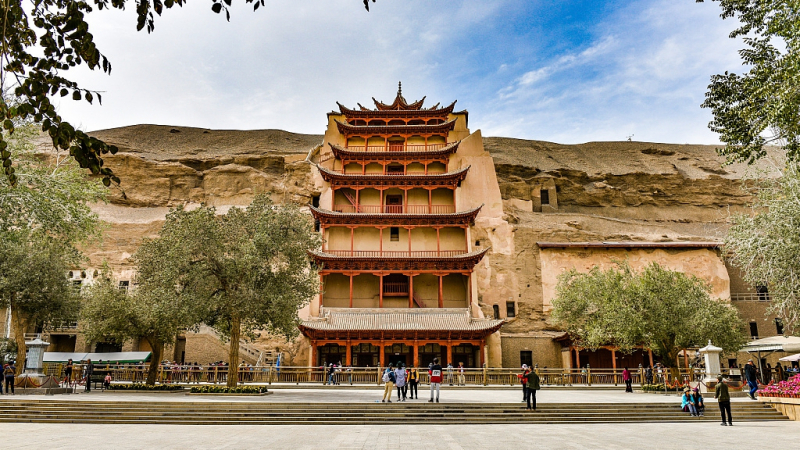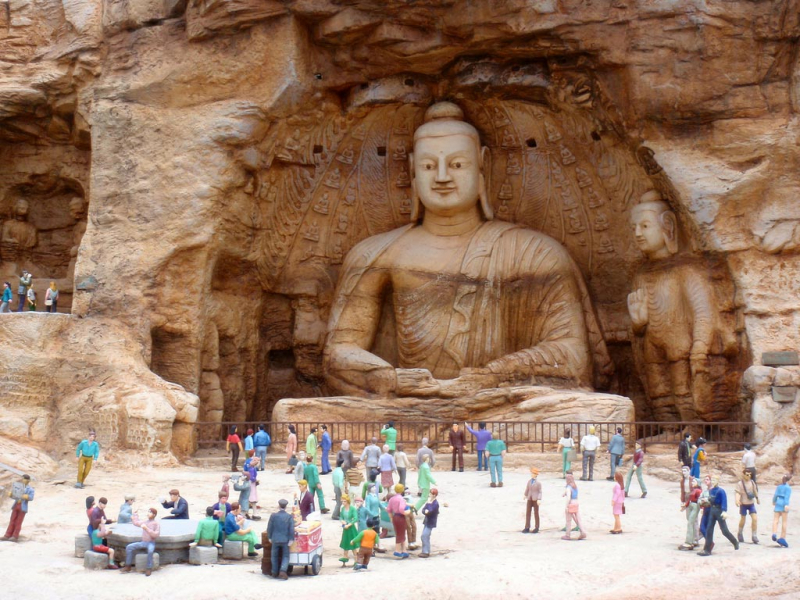The Mogao Caves
The Mogao Caves, also known as the Thousand Buddha Grottoes or Caves of the Thousand Buddhas, are a complex of 500 temples located 25 kilometers southeast of Dunhuang, China's Gansu province, at a religious and cultural crossroads. The caverns are sometimes referred to as the Dunhuang Caves, but this title is also applied to other Buddhist cave sites in and around Dunhuang, including the Western Thousand Buddha Caves, Eastern Thousand Buddha Caves, Yulin Caves, and Five Temple Caves. The caverns have some of the best specimens of Buddhist art from over a thousand years ago.
In AD 366, the first caves were excavated as Buddhist meditation and prayer sites. The Mogao Caves are the most well-known of China's Buddhist grottoes, and they are one of China's three most renowned ancient Buddhist sculptural monuments, together with the Longmen Grottoes and Yungang Grottoes.
The so-called "Library Cave," which had been closed up in the 11th century, was found in 1900 with a significant collection of papers. The library's contents were spread throughout the world, with the main holdings presently in Beijing, London, Paris, and Berlin. The International Dunhuang Project was established to organize and gather scholarly work on the Dunhuang manuscripts and other material. The caverns are becoming a major tourist attraction in themselves.









